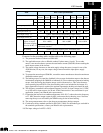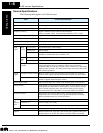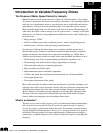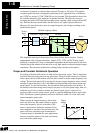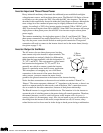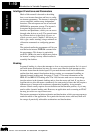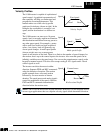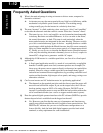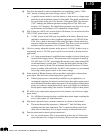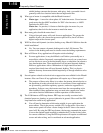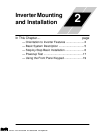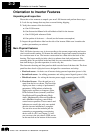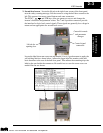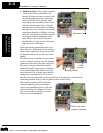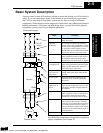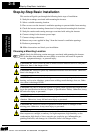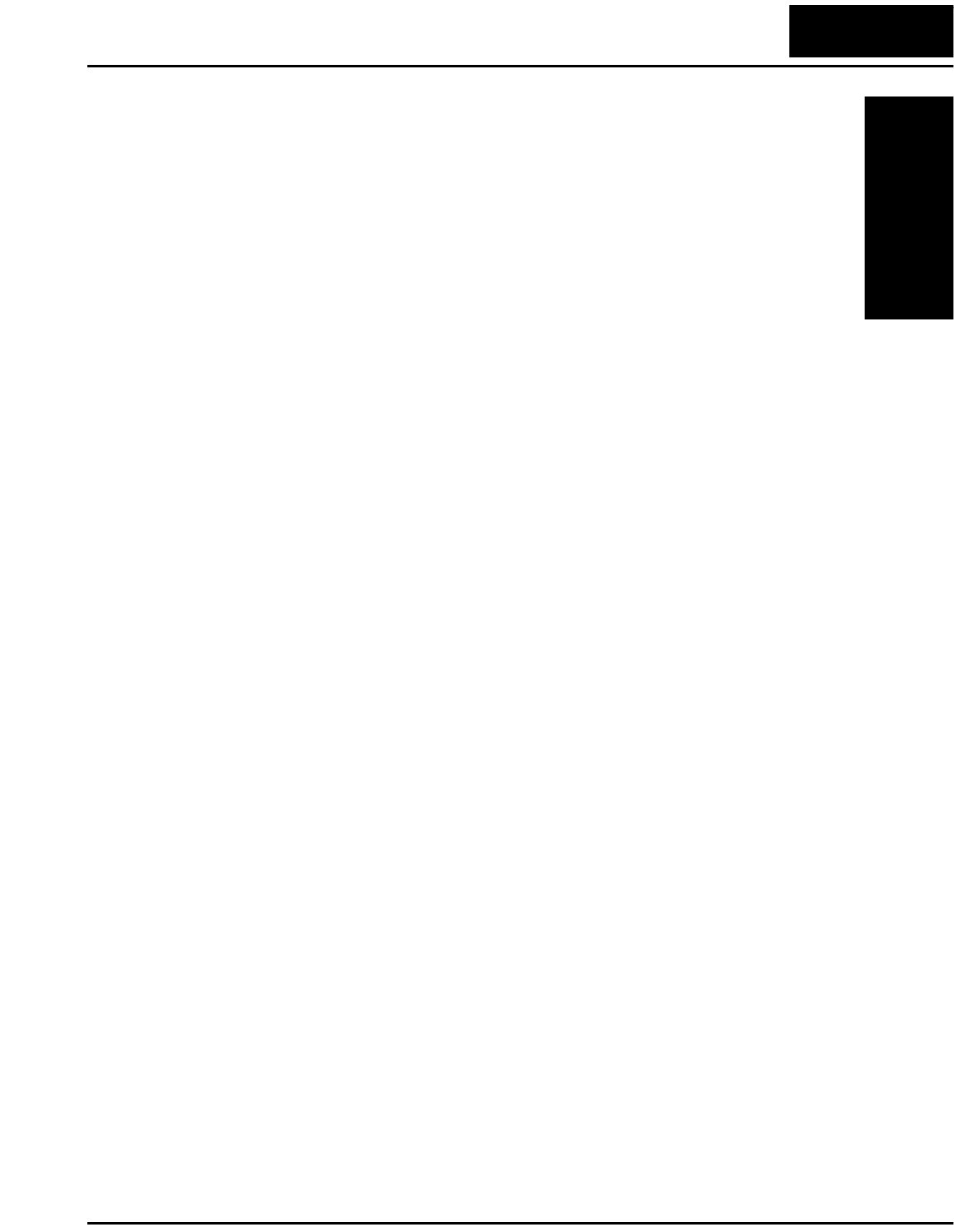
L100 Inverter
Getting Started
1–13
Q. Why does the manual or other documentation use terminology such as “200V
class” instead of naming the actual voltage, such as “230 VAC?”
A. A specific inverter model is set at the factory to work across a voltage range
particular to the destination country for that model. The model specifications
are on the label on the side of the inverter. A European 200V class inverter
(“EU” marking) has different parameter settings than a USA 200V class
inverter (“US” marking). The initialization procedure (see page 6–8) can set
up the inverter for European or US commercial voltage ranges.
Q. Why is there not a 100V class version of the L100 inverter, so it would work with a
USA 115VAC power source, for example?
A. A 100V version of the L100 may be available in the future. However, most
industrial, commercial, or heavy appliance applications use 230VAC in the
USA. Also, a built-in advantage is that using the higher voltage means less
current to deliver the same amount of power. This allows you to use smaller
diameter (and less expensive) wire for power and motor wiring.
Q. I live in a country where the domestic utility power is 115 VAC. Is there a way to
conveniently access a 230 VAC power source for a test bench to develop a motor
application?
A. A 1:2 step-up transformer is available from a number of sources (check your
local electrical supply house). The transformer will be designed to develop
230 VAC from 115 VAC, for example. Be sure the power output rating (kW)
of the transformer is greater than 1.73 times the three-phase current of the
motor you intend to power. We recommend doing this for motors 1/2 horse-
power or smaller, with small loads. For 400 V class inverters, we recommend
only using a utility power source of the correct voltage.
Q. Some models of Hitachi inverters will accept either single phase or three-phase
power input. How do I know which input power type to use?
A. If three-phase power is conveniently available for your application, we
recommend using that (the inverter can develop its three-phase output power
most efficiently from three-phase input power). In the absence of three-phase
power, you can use a single-phase power source with slightly less efficiency
but the power output rating is the same for N models (single or three-phase).
Q. If I decide to use single-phase input power for the inverter, can I also use a single-
phase motor?
A. No. All Hitachi inverters develop a variable three-phase output, requiring the
use of a three-phase AC induction motor.
Q. Why doesn’t the motor have a neutral connection as a return to the inverter?
A. The motor theoretically represents a “balanced Y” load if all three stator
windings have the same impedance. The Y connection allows each of the
three wires to alternately serve as input or return on alternate half-cycles.
Q. Does the motor need a chassis ground connection?
A. Yes, for several reasons. This is for protection in the event of a short in the
motor that puts a live voltage on its housing. Motors and other components
Technologies Inc.
Toll Free: voice: 1-877-539-2542 fax: 1-800-539-2542 www.mgitech.com



